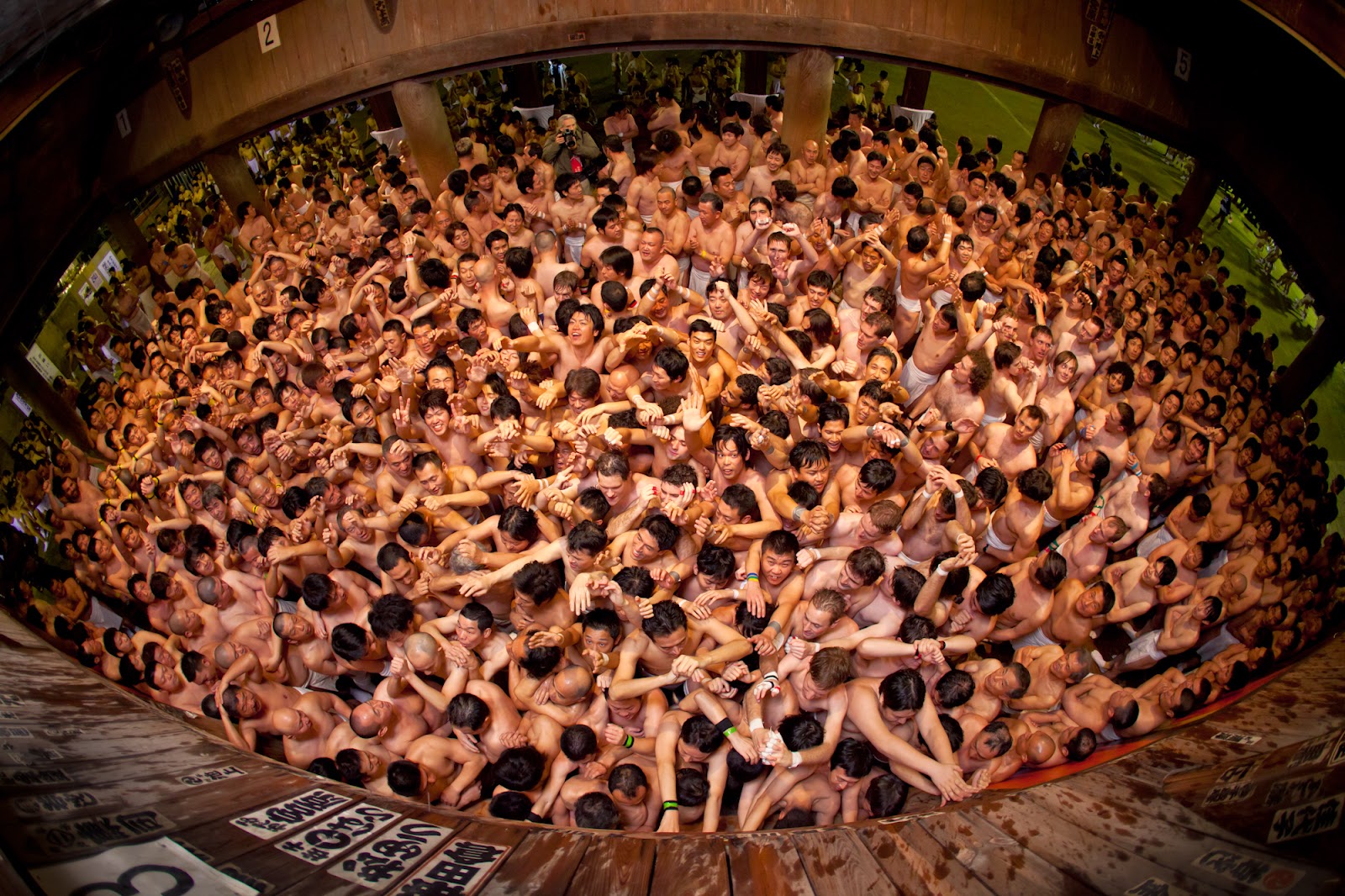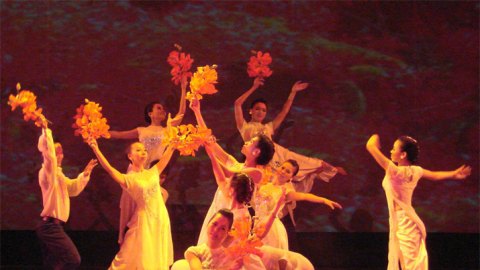In 2018, about 8,000 men participated in the Saidaiji-eyo festival, and this year, an estimated 10,000 people attended the festival held at the famous Kinryozan Saidaiji Temple. These men were almost completely naked, wearing only white loincloths, their bodies drenched in sweat despite the cold weather in Okayama City at the moment, competing for a pair of lucky sticks.

Participants wear only a white loincloth called Fundoshi and a pair of white socks called Tabi.
The Saidaiji-eyo Festival, which is said to have originated from the Muromachi period, is now 510 years old. The Muromachi period, also known as the "Seven-Dinner Era," was a golden age in Japanese history, spanning from approximately 1336 to 1573. It marked the reign of the Ashikaga Shogunate, officially established in 1336 by the first Shogun, Ashikaga Takauji. Muromachi officially ended in 1573 after the 15th and last Shogun, Ashikaga Yoshiaki, was expelled from the capital, Kyoto, by Oda Nobunaga.
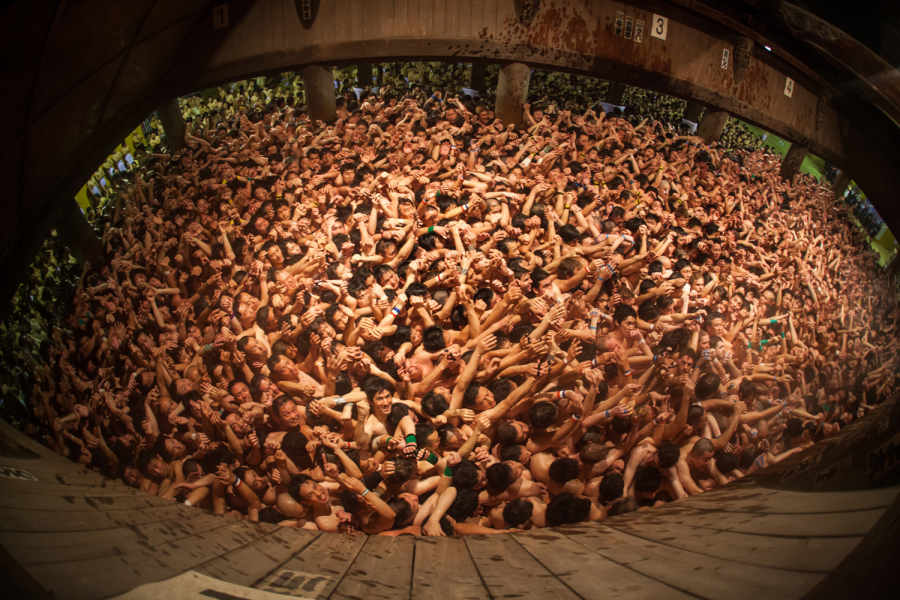
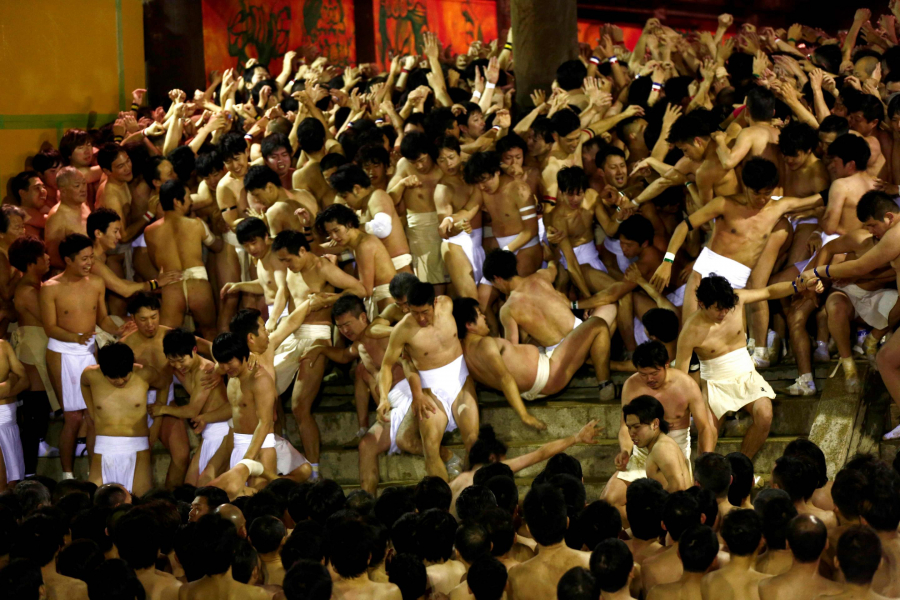
During the Saidaiji-eyo festival, men are required to strip naked in the bitter cold of winter in Japan, wearing only a white loincloth called Fundoshi and a pair of white socks called Tabi. In such harsh weather conditions, participants compete for a pair of lucky sticks called Shingi.

Everyone will compete for the lucky pair of sticks called Shingi.
At exactly 10 pm on the night of the festival, the lights in the temple will be turned off, a priest standing from the window will throw two lucky sticks measuring 20 cm long and 4 cm in diameter into the crowd. Festival participants will try to grab the Shingi because according to legend, whoever holds the Shingi the longest and puts the stick into a box called Masu will have good luck and happiness for the whole year. Others will try to touch the person who gets the stick to spread the luck, and then everyone will return in order.
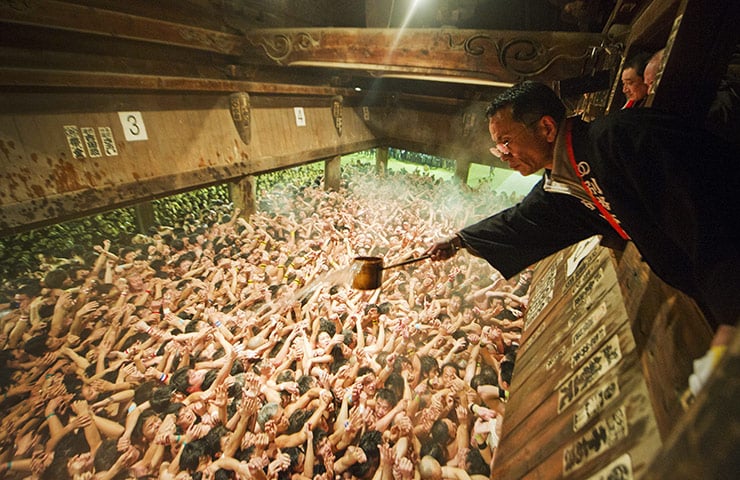
The Saidaiji-eyo Festival was reenacted in the 2014 film Forestry. This festival has existed for more than 5 centuries, originating from Kinryozan Saidaiji Temple and passed down through many generations. At first, participants fought over paper talismans, but because they were easily torn, they were later replaced with wooden sticks.
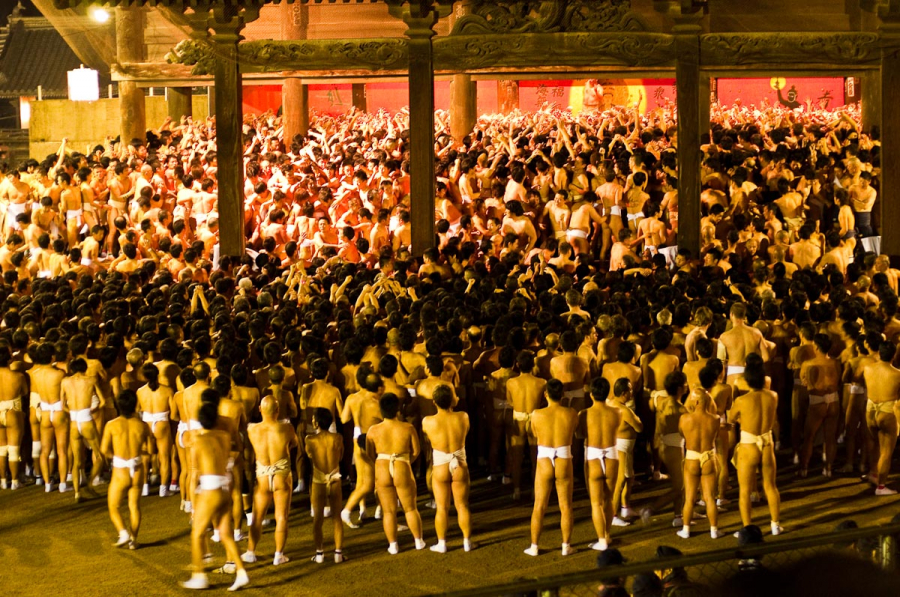
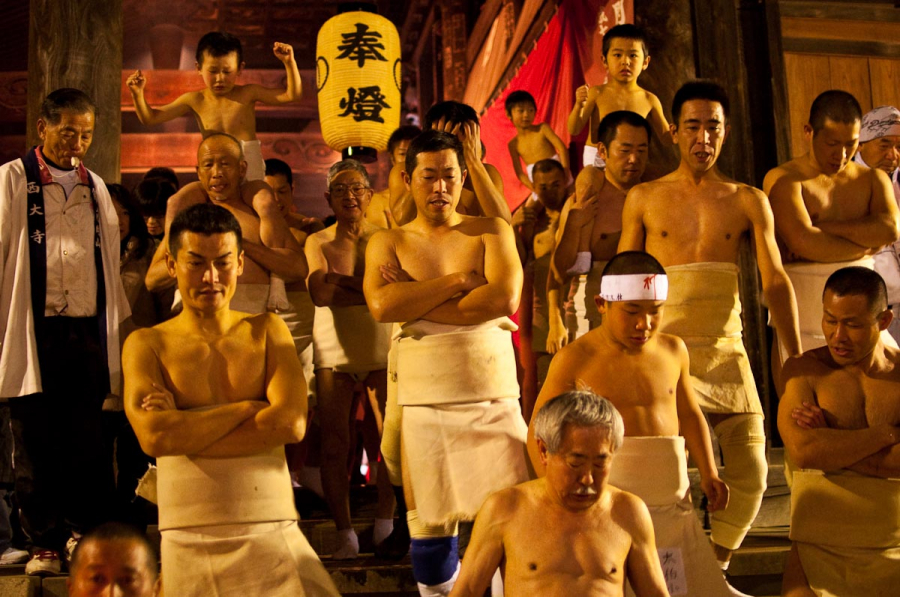
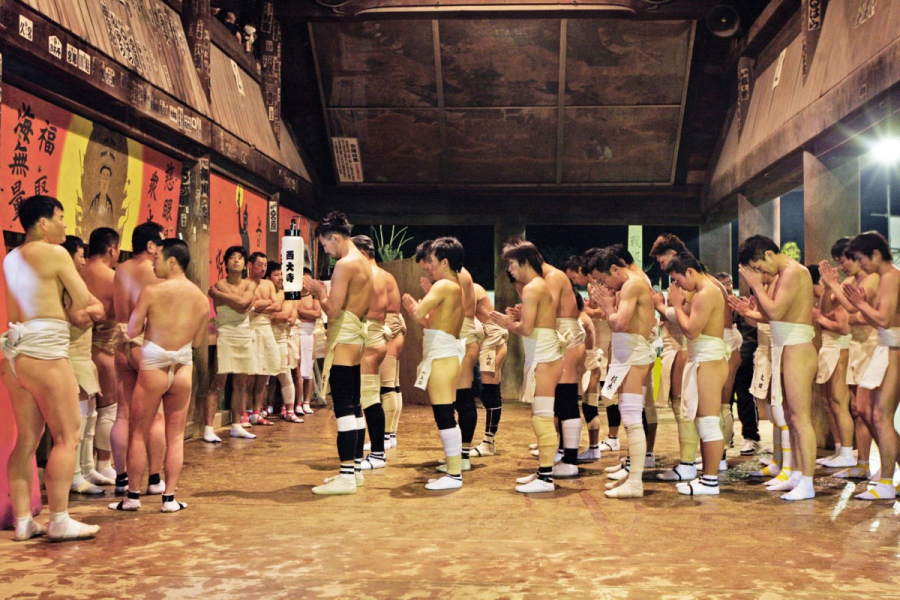
In Okayama City, during the coldest days of the year, which are usually February, thousands of Shinto men strip off, wear loincloths, drink sake to purify themselves, then scream and run to warm up. They put on traditional costumes and step into cold waterfalls to purify their bodies before entering the sacred shrine to participate in the Saidaiji-eyo festival.





